Pirelli launches Cinturato P7 performance tyre with ‘intelligent compound’
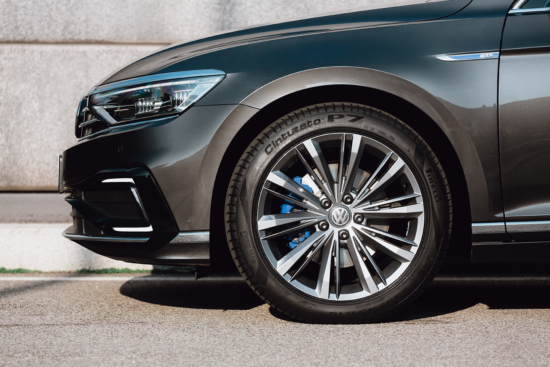 Pirelli Cinturato P7
Pirelli Cinturato P7
Tyre manufacturer says development of its latest Cinturato was enhanced by collaborative programme with premium car manufacturers
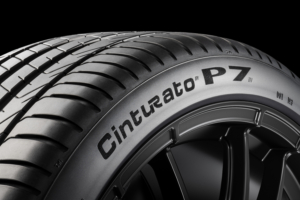 Pirelli has launched a new high performance tyre for premium cars in European and Asian markets, the next generation Cinturato P7. The Cinturato product line has one of the longest histories in the car tyre segment. The brand, with which Pirelli claims to have “invented the concept of the sporting tyre for the road”, celebrates its 70th anniversary this year. While the P Zero line is Pirelli’s primary focus for the highest performance vehicles, the Formula 1 tyre supplier includes Cinturato branding via the series’s wet weather tyres with good reason. Such is Pirelli’s focus on the ultra-high performance sector, that the Cinturato is positioned as another tyre line for top premium segment cars. Preparations for the launch of the new P7 focused on drivers using 18” and above sizes, while Pirelli’s original equipment focus has also yielded 70-plus homologations for the tyre. Launching a UHP summer tyre in 2020 might seem a tricky proposition – and other tyre manufacturers have rescheduled new product launches for 2021. However, Pirelli research in April and May has suggested there may be an opportunity for new products, featuring the latest technologies as motorists opt to use private cars as part of their continued social distancing efforts.
Pirelli has launched a new high performance tyre for premium cars in European and Asian markets, the next generation Cinturato P7. The Cinturato product line has one of the longest histories in the car tyre segment. The brand, with which Pirelli claims to have “invented the concept of the sporting tyre for the road”, celebrates its 70th anniversary this year. While the P Zero line is Pirelli’s primary focus for the highest performance vehicles, the Formula 1 tyre supplier includes Cinturato branding via the series’s wet weather tyres with good reason. Such is Pirelli’s focus on the ultra-high performance sector, that the Cinturato is positioned as another tyre line for top premium segment cars. Preparations for the launch of the new P7 focused on drivers using 18” and above sizes, while Pirelli’s original equipment focus has also yielded 70-plus homologations for the tyre. Launching a UHP summer tyre in 2020 might seem a tricky proposition – and other tyre manufacturers have rescheduled new product launches for 2021. However, Pirelli research in April and May has suggested there may be an opportunity for new products, featuring the latest technologies as motorists opt to use private cars as part of their continued social distancing efforts.
The Cinturato P7 is a high-performance summer tyre, delivering increased safety, efficiency, and sustainability, Pirelli states. The manufacturer said it capitalised on lessons learned from the development of the previous-generation P7, which was launched in 2009. Key improvements for the new generation Cinturato P7 include its safety in the wet. The tyre’s braking distance on wet roads, from 100km/h has been reduced by four metres, it says. Meanwhile, the tyre also features an “intelligent” compound, containing silicon resins that enhance the interaction of the tyre’s polymers across a wider temperature range. Pirelli says the effect of this is to make the tyre more adaptable to atmospheric conditions.
New Pirelli Cinturato P7 characteristics
Pirelli says the previous generation of the Cinturato P7, launched in 2009, “has become a homologation leader”. This has meant that the tyre has been “constantly updated and improved thanks to the close partnerships between Pirelli and the world’s premium car makers.” So what are the differences with the previous product that have led to a full next-generation launch?
The new Pirelli Cinturato P7 targets the biggest priorities for today’s modern motorists, which Pirelli says are safety and efficiency. Pirelli says its engineers have intensified research and development to overcome typical compromises, such as performance in the wet and reducing rolling resistance, requiring the implementation of new technologies capable of reconciling conflicting requirements. Such technical innovations include a new compound with what Pirelli calls “a type of ‘mechanical intelligence’ that can change according to ambient temperatures.” The manufacturer says the effect of this is “a bit like having two compounds in one.”
‘Intelligent compound’
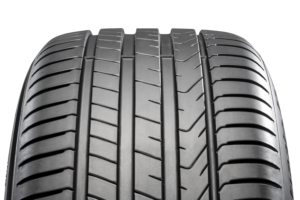 The new-generation Cinturato P7’s tread pattern is enriched with silicon resins that help to increase grip and enhance the function of the tyre’s polymers. These are synthetic elastic materials that are chemically modified to improve the interaction with silicon. These polymers can change according to the tyre’s working temperature. Pirelli says the result of this is a new compound that benefits from a sort of “mechanical intelligence” thanks to better distribution of the silicon particles and more effective interaction between them. As a result, the tyre’s characteristics can “adapt” to driving and temperature conditions, giving the driver “an extremely wide optimal working range,” Pirelli says.
The new-generation Cinturato P7’s tread pattern is enriched with silicon resins that help to increase grip and enhance the function of the tyre’s polymers. These are synthetic elastic materials that are chemically modified to improve the interaction with silicon. These polymers can change according to the tyre’s working temperature. Pirelli says the result of this is a new compound that benefits from a sort of “mechanical intelligence” thanks to better distribution of the silicon particles and more effective interaction between them. As a result, the tyre’s characteristics can “adapt” to driving and temperature conditions, giving the driver “an extremely wide optimal working range,” Pirelli says.
The new Pirelli Cinturato P7 features lateral and longitudinal grooves to evacuate water more efficiently. Its shoulder blocks are designed to reduce stopping distances in the wet and the dry. The design and rigidity distribution of these blocks allows the new Cinturato to have a bigger contact patch through corners, which helps to deliver more precise steering in all conditions. This increases both safety and comfort. On the latter, the tread, which was tested virtually and physically in the design process, optimises both ride and acoustic comfort for the driver, absoarbing bumps more effectively and reducing noise.
Performance improvements
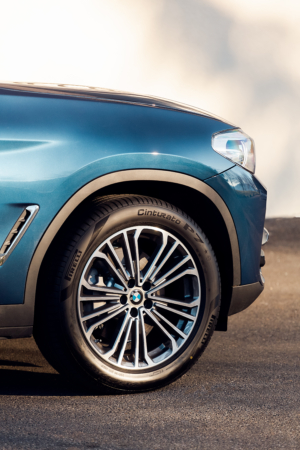 Pirelli describes safety as “the key characteristic of the new Pirelli Cinturato P7.” As well as improving on the dry handling of its predecessor, the tyre also improves wet handling, aquaplaning and braking in particular: taking four metres less to come to a stop from 100km/h. This is between seven and 10 per cent less than its predecessor, depending on the tyre dimensions. Overall tyre life increases by six per cent, meaning that tyres have to be changed less frequently. Rolling resistance also goes down by an average of one class (minus 12 per cent), improving fuel consumption by four per cent (measured on the WLTP cycle) and therefore helping to reduce CO₂ emissions.
Pirelli describes safety as “the key characteristic of the new Pirelli Cinturato P7.” As well as improving on the dry handling of its predecessor, the tyre also improves wet handling, aquaplaning and braking in particular: taking four metres less to come to a stop from 100km/h. This is between seven and 10 per cent less than its predecessor, depending on the tyre dimensions. Overall tyre life increases by six per cent, meaning that tyres have to be changed less frequently. Rolling resistance also goes down by an average of one class (minus 12 per cent), improving fuel consumption by four per cent (measured on the WLTP cycle) and therefore helping to reduce CO₂ emissions.
Pirelli’s engineers have worked on the tyre’s capability to communicate with existing electronic driver aid systems. It says that a tread pattern optimised to work in synergy with the car’s own electronics is able to brake sooner, for instance. Pirelli’s relationship with leading global car makers has allowed it to optimally tune the tyre through virtual modelling to work together with existing driver aids.
Pirelli uses the example of lane control systems: If twinned with an ‘unknown’ tyre, these systems can potentially make continual corrections, as they are not familiar with the specific dynamics of the tyre. If the same car is equipped with a new Cinturato P7, complete with the marking that distinguishes it as having been made for that particular manufacturer, the car’s lane departure system will not request these continual corrections, as it can access data on its interaction with this precise tyre. This illustrates the advantage OE suppliers can activate, especially on high-performance car models.
Reducing weight, cost of ownership
Materials created for the new Pirelli Cinturato P7 offer greater mechanical resistance as well as better grip in all sorts of different driving situations, Pirelli adds. The reduced wear from the new “high mileage” compound focuses on reducing the total cost of ownership for motorists. Pirelli says the increased tyre life has been enabled by the use of polymers in the compound that have a high molecular weight. Pirelli uses chains of chemical elements that are very long and so give the tyre certain mechanical properties such as greater resistance to abrasion and increased durability. The tread pattern compound was designed alongside the tyre as a whole, to deliver an optimum balancing of the tread system, that optimises the tyre’s footprint to the road, reducing heat generated while driving and contributing to an increase in grip yet reduction in wear.
Pirelli explains that there are additional benefits to increasing the mechanical resistance of the compound. Less material is needed for the tread pattern. The overall weight of the tyre has been reduced after a complete review of all the materials used. Less material means lower weight, decreased rolling resistance, and a more mindful use of resources. The result of all of this, is lower rolling resistance and therefore lower fuel consumption.
Pirelli’s engineers also worked on the reinforcement materials, without compromising the structure of the new Cinturato P7. The use of cords that are highly resistant to traction means that fewer of them can now be used, which also contributes to weight reduction. Getting overall weight down was one of the key requests from car manufacturers, helping them meet increasingly stringent emissions targets worldwide.
OE focus
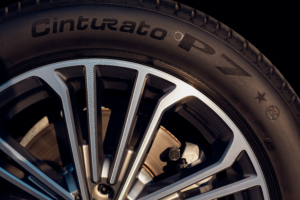
Pirelli focuses on original equipment homologations in the high performance car segment, with specially tweaked versions of the tyre carrying special sidewall markings
Pirelli adapts the Cinturato P7 for all the different new car models that the tyres are homologated for. It can also more effectively answer motorists’ demands. These include the recently-launched Pirelli Elect range – a package of technologies tailored for electric or plug-in hybrid cars. Such technologies include: instantly available grip for the strong performance characteristics of electric engines; lower rolling resistance to maximise battery range; and reduced noise to benefit from the quietness and comfort of electric power. The Cinturato P7 can also include Run Flat and Seal Inside technologies, which allow drivers to keep going even after a puncture. The first system uses reinforced sidewalls to support the weight of the car; the second deploys a special mousse that can instantly plug holes that are up to four millimetres wide.
Pirelli used a three year development cycle for the new Cinturato P7. Before the aftermarket versions, the original equipment tyres homologated by manufacturers were created, for cars that will hit the road in the coming weeks. The new P7 arrives with more than 70 homologations to its name already. The tyre manufacturer believes this figure will exceed 100 by the end of 2020. Each homologation requires a specific research and development programme, carried out in tandem with every carmaker involved. Of these, Pirelli has created 23 ‘marked’ versions of the Cinturato P7 for cars with 17-inch rims or bigger. The previous Cinturato P7 also registered more than 100 OE fitments, which Pirelli says shows it is “the class leader, most commonly chosen by premium carmakers.”

 Pirelli
Pirelli

Comments